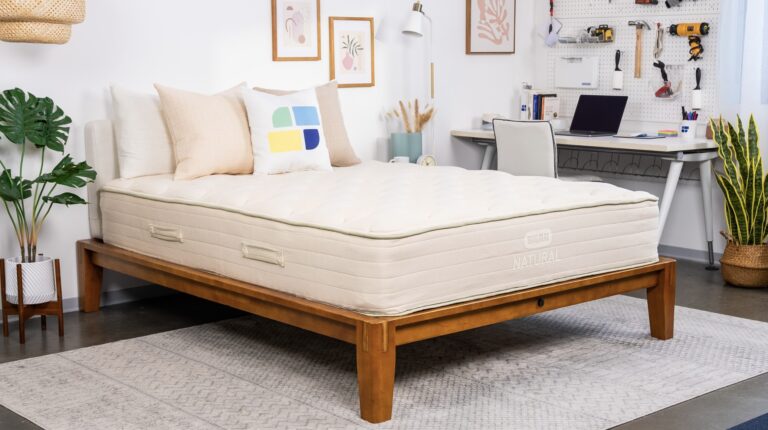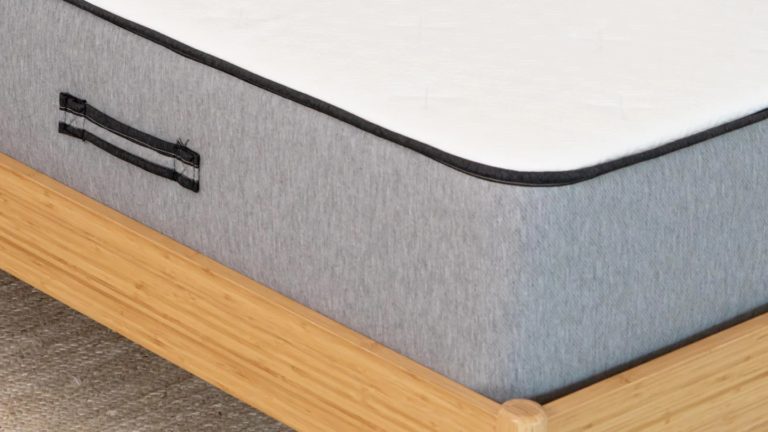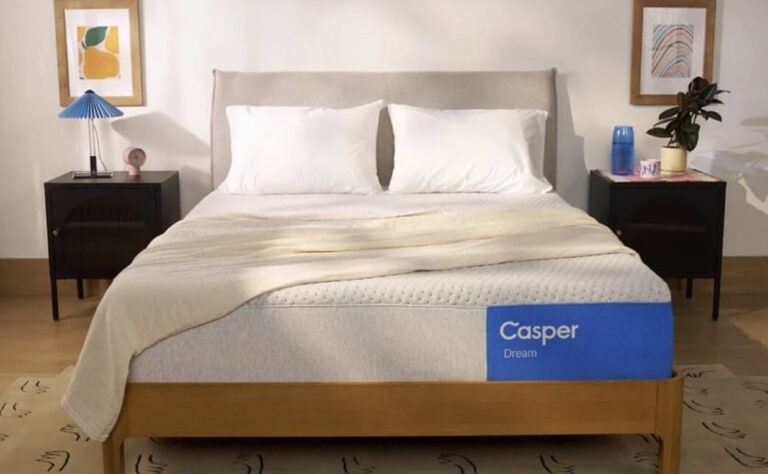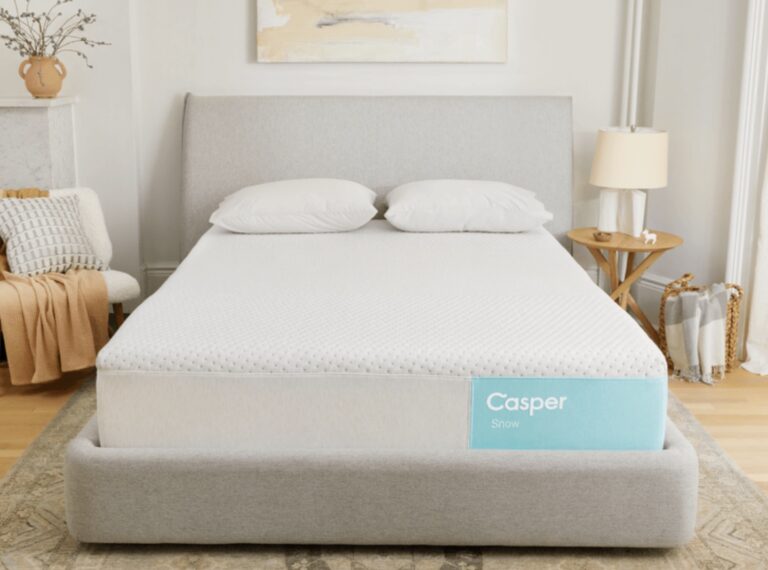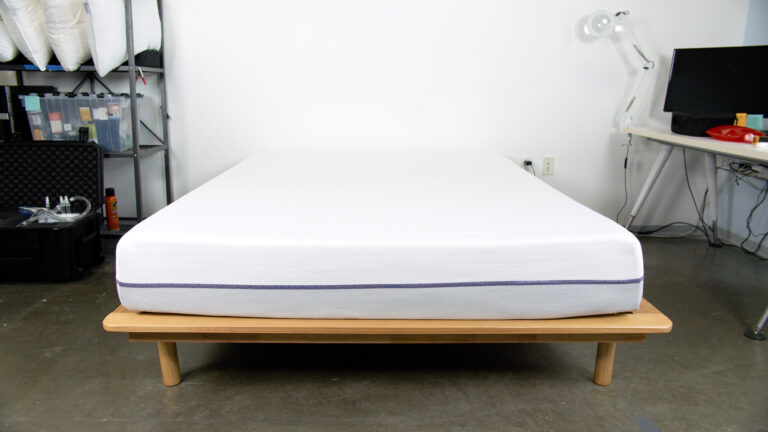When you buy through our links, we may earn a commission. Products or services may be offered by an affiliated entity. Learn more.
Bear Original vs. Casper One Mattress Comparison
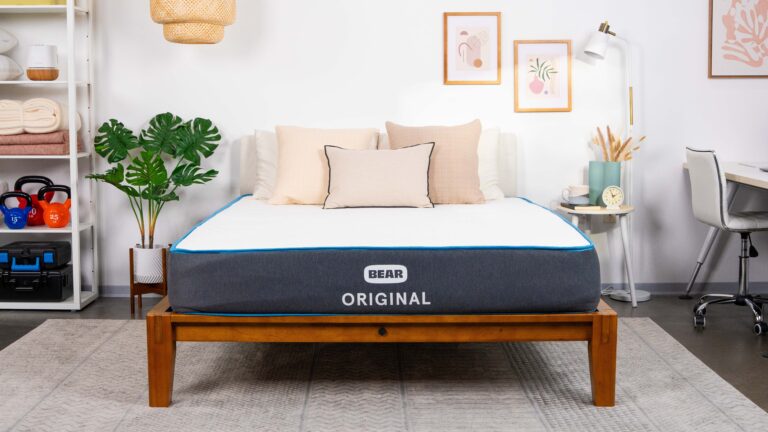
Bear Original
Bottom Line
The Bear Original is a budget-friendly foam mattress that feels firmer and more supportive than many competing models.
35% off + free pillows with code: SF35
Full Mattress ReviewVS
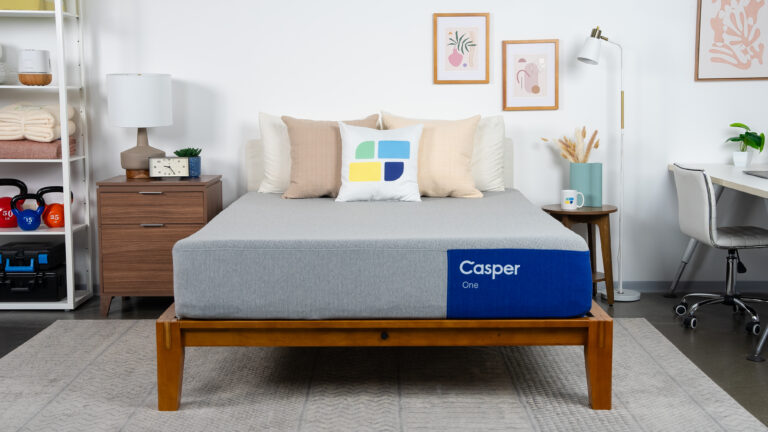
Casper One
Bottom Line
The Casper One is an all-foam mattress with a deep contour and cushioning for excellent pain and pressure relief.
Click for the best Casper mattress deals
Full Mattress ReviewBear and Casper are both mattress companies that were among the first to sell “mattress in a box” models customers could order online and receive at their front doors. Both companies launched in 2014 and continue to assemble their beds in the U.S.
The Bear Original and the Casper One are each their brands’ flagship, all-foam mattress. Because they share similar constructions and sell for comparable prices, shoppers may have a hard time identifying which mattress would work best for them. That’s why we evaluated both beds in our Seattle Test Lab, compared the companies’ customer policies, and scoured the internet for online customer reviews.
Quick Look
$649 – $1,373
$799 – $3,195
Medium Firm (6), Firm (7)
Medium Soft (4), Medium (5), Medium Firm (6)
- Contouring foam layers support the spine and reduce pressure
- Celliant textile covers are designed to promote thermoregulation and muscle recovery
- Hybrid coils offer enhanced edge support
- Mixed-foam designs offer a balance of conforming and responsiveness
- Excellent pain and pressure relief across the board
- Zoned comfort and transitional layers provide extra reinforcement for sleepers
- 120 nights (30-night break-in period)
- Lifetime, limited
- 100 nights (30-night requirement)
- 10 years, limited
- Not accredited
- A+
Our Testing Team’s Take
Over the last decade, our testing team has evaluated nearly 2,000 mattresses in our Seattle Test Lab. Through this hands-on testing, we’ve developed a unique product research methodology that forms the backbone of our mattress rating system.
Using cutting-edge technology, we pressure map each bed to identify where pressure points may form. We use similarly advanced tools to measure motion transfer across each mattress’ surface and heat retention.
We also have testing team members take mattresses home for weeks at a time, allowing them to mimic real-world use. Because our team members represent a variety of body weights and sleep position preferences, their perspectives can help you identify which might be the best mattress for you.
Our Verdict
The Bear Original and the Casper One are all-foam mattresses with similar constructions sold for comparable prices. In our testing, they both received their highest ratings in motion isolation, making them a good option for couples who share a bed. The biggest difference between the mattresses is their firmness levels — the Bear Original is firm (7), while the Casper One is medium firm (6).

Brad Nehring
Senior Product Analyst
Side
215 pounds
Sleeps with a weighted blanket
The Casper One doesn’t have as much contouring as prior models from Casper, which earned a thumbs-up from me. I could feel the foam minimize impact near my hips and shoulders, but I never felt like I was sinking into the mattress.
Because the Bear Original is firmer than the Casper One, it doesn’t rate as highly in terms of pressure relief. While there’s some overlap, these beds also appeal to different types of sleepers. The Casper One rated highly among side sleepers weighing less than 230 pounds and back and stomach sleepers weighing under 130 pounds. The Bear Original performed best for back and side sleepers weighing at least 130 pounds.

Jeremy Klein
Senior Product Testing Manager
Side
160 pounds
Nightly melatonin user
“The Bear Original mattress was easy to move around and set up as it is very light in comparison to other mattresses. The Bear felt firmer overall, so as a side sleeper who likes beds a little softer, I didn’t fall in love with it. Back sleeping, on the other hand, was fantastic.”
Construction and Materials
The Bear Original and Casper One mattresses are all-foam mattresses with similar designs, though there are some differences.
| Construction Analysis | Bear Original | Casper One |
|---|---|---|
| Cover | Quilted fabric with optional Celliant-infused cover | Polyester, polyethylene, and Lycra-spandex blend |
| Comfort Layer | Memory foam (gel-infused) | Polyfoam (open-cell) |
| Transitional Layer | Polyfoam | Memory foam |
| Support Core | 7″ polyfoam | Polyfoam |
Bear Original Breakdown
The all-foam Bear Original rates firm, or 7 out of 10 on our firmness scale. It has a 10-inch profile and contains three internal layers. The basic cover for the Bear Original is quilted, but shoppers have the option to upgrade to a Celliant fiber cover. Celliant fiber is engineered to absorb body heat and convert it into far infrared radiation. This process is intended to promote cooling and speed up muscle recovery for athletes and other physically active people.
Beneath the cover, there’s a layer of gel-infused memory foam. This material contours to the body and helps absorb movement. A polyfoam transitional layer also provides cushioning, while preventing sleepers from sinking all the way down to the support core.
The support core is a 7-inch layer of high-density polyfoam that stabilizes the bed. All three foam layers in the bed are CertiPUR-US GreenGuard Gold certified, which ensures that they have been tested for heavy metals, formaldehyde, and other potentially harmful substances. Bear also states that the mattress is U.S.-made and fiberglass-free.
Casper One Breakdown
The Casper One is an all-foam mattress with a medium firm (6) feel. It measures 11 inches thick. Like the Bear Original, the Casper One contains three internal layers. Its cover is a blend of polyester, polyethylene, and Lycra spandex that has been designed to feel soft to the touch.
The comfort layer consists of open-cell polyfoam. This material provides cushioning and contours to sleepers’ bodies. Its open-cell construction means it contains small pockets that allow for increased airflow, which can counteract the foam’s tendency to retain heat. A memory foam transitional layer also adds cushion and relieves pressure while keeping sleepers from sinking in too deeply.
The Casper One’s support core is made of high-density polyfoam intended to stabilize the bed. Like the Bear Original, the Casper One only contains foams that are CertiPUR-US certified. The Casper One’s cover has also received OEKO-TEX certification, which ensures the materials have been tested for potentially harmful chemicals.
Mattress Sizing and Weight
The Bear Original and Casper One mattresses have similar profiles and weights. At 10 and 11 inches thick, respectively, they can both easily fit standard fitted sheets. Both beds weigh between 70 and 80 pounds in a queen size, which makes them lighter than most hybrid and latex models, but we still recommend lifting and moving them with a partner.
| Mattress Model | Profile | Weight (Queen) |
|---|---|---|
| Bear Original | 10″ | 70 lbs. |
| Casper One | 11″ | 76 lbs. |
Performance Ratings
The Bear Original and Casper One both shine when it comes to isolating motion. As a result, when one person rolls over or gets out of bed during the night, their bed partner may not feel much movement transfer across the bed’s surface on either model. Like many all-foam beds, the Casper One also excels at pressure relief. Because the Bear Original is firm (7), it doesn’t contour to the body quite as much, and people of lower body weights might find they develop pressure points on the bed.
Another differentiating factor in these mattress’ performance scores is how well they control temperature. We found that the Casper One is above-average at dispersing heat, while the Bear Original is slightly below average. However, most hybrid, latex, and airbed mattresses will likely disperse heat better than these beds due to foam’s tendency to absorb heat.
Our testing found that the Bear Original works best for side and back sleepers who weigh at least 130 pounds. The Casper One performs best for side sleepers weighing up to 230 pounds and back and stomach sleepers weighing less than 130 pounds. Side sleepers weighing over 230 pounds and back sleepers weighing between 130 and 230 pounds also found the bed’s support adequate, but didn’t enjoy it quite as much.
Mattress Pricing
All-foam mattresses generally cost less than other mattress types because synthetic foam isn’t as expensive to produce as steel or latex. The Bear Original and Casper One fall on the low-to-middle end of the all-foam mattress price spectrum, making them attractive to shoppers on a budget.
While their prices are comparable, the Casper One costs more than the Bear Original. The beds come with very similar policies, though Bear’s lifetime warranty is notably longer than Casper’s 10-year warranty.
| Policy | Bear Original | Casper One |
|---|---|---|
| Sleep Trial | 120 nights | 100 nights |
| Warranty | Lifetime, limited | 10 year, limited |
| Shipping | Free to the contiguous U.S.; extra fee for Alaska and Hawaii | Free to the contiguous US; extra fee for Alaska and Hawaii |
| White Glove Delivery | Available for a fee | Available for a fee |
What Customers Are Saying
Thousands of customers have given both the Bear Original and the Casper One mattress high ratings and reviews online. Reviewers commonly mention the value of these mattresses, saying that they are of surprisingly high quality given their relatively low costs. People also routinely comment on how comfortable these beds feel, and how easy they are to set up.
Negative reviews of the Bear Original and the Casper One share some commonalities. People who dislike these mattresses usually complain about their firmness levels, either saying they are too hard or too soft. These reviews are a good reminder to think about your sleep position preference, body weight, and what firmness is likely ideal for you before making a mattress purchase.

Still have questions? Ask our community!
Join our Sleep Care Community — a trusted hub of product specialists, sleep health professionals, and people just like you. Whether you’re searching for the perfect mattress or need expert sleep advice, we’ve got you covered. Get personalized guidance from the experts who know sleep best.

